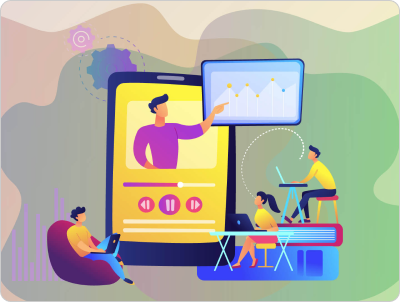Prevent Cheating in Online Exams with Online Proctoring?
by Vineith Kaul, Posted on 24 December 2021

Prevent Cheating in Online Exams with Online Proctoring?
Academic integrity can be difficult to protect in online environments. Unfortunately, cheating is rampant on all major universities’ online exams, especially during the pandemic year.
As per a survey done by Education Work 73% of students cheated during online exams. Thus, the need for online proctoring tools became indispensable. The online proctoring tools equipped examiners with anti-cheating measures to thwart even the sneakiest attempts to cheat using the most sophisticated gadgets and most creative tactics.
When choosing the best proctoring tools, it is helpful to understand how the technology works and the concerns regarding each method for monitoring online interactions. Below we will discuss some of these online proctoring tools:
Browser lockdowns*
Lockdown browsers were the first attempt to address the challenges of ensuring the integrity of online assessments. During an exam, these systems prevented students from using alternative computer programs and accessing Internet sites and other applications. Printing and copying were also disabled.
Video Monitoring*
In online testing environments, video monitoring reduces cheating concerns. Students must verify their identities and scan their environments before beginning an exam. A government-issued photo identification card or a student card can be used to verify an individual’s identity. The environmental scan of the testing environment is usually a 360-degree view of the room and work surface.
Proctored online tests usually use one of two methods to monitor testing behavior:-
Option 1- use live proctors to monitor the students remotely.
Option 2- record students’ behavior during the test session.
Those video recordings are reviewed later for possible violations. Violations of academic integrity include tracking eye movements away from the computer to uncover cheat sheets and leaving the room.
Biometric Identification* #education #database #technology
In biometric software, fingerprints, face, iris, voice, signatures, typing patterns, or a combination of these are used to confirm that the person on the other side of the computer screen is the intended recipient of the assessment. These systems typically use physical or behavioral characteristics that are unique to an individual. It is often required to create a database with the sample of the biosignature, which can be accessed and compared during the exam.
This technology has yielded promising results.
Your organization too could benefit from remote proctoring. Feel free to check out the Anubudh-Monday Morning Testing/Assessment platform: testing-platform. It is one of the most comprehensive and cost-effective testing platforms offering all the above capabilities and mor
1 Comments
Leave a reply
your email address will not be published. required fields are marked *









 How is Technology Helping in the Advancement of Education?
How is Technology Helping in the Advancement of Education?  Hire a talent acquisition manager through Anubudh-Monday Morning
Hire a talent acquisition manager through Anubudh-Monday Morning 
Google Reply
GoogleThe time to study or pay a visit to the subject material or web sites we have linked to below.